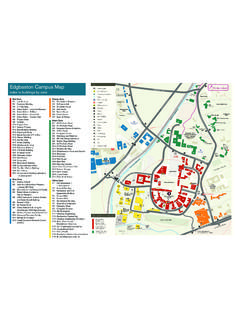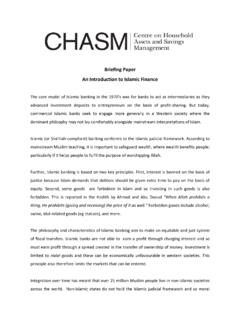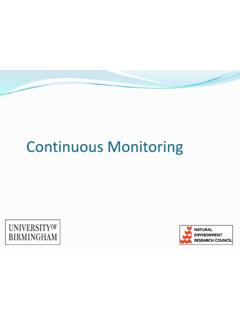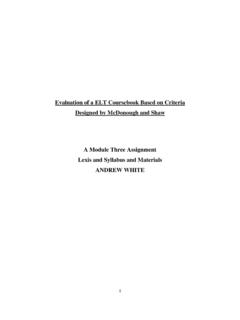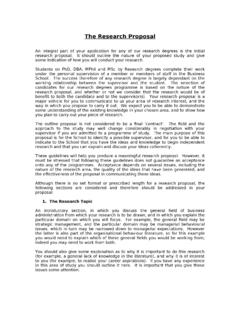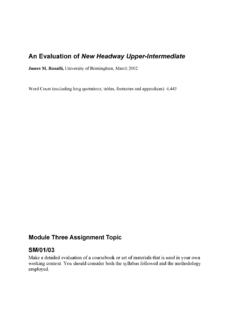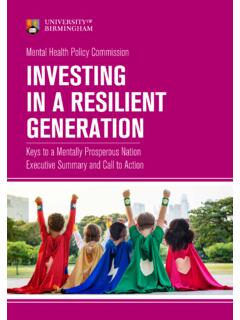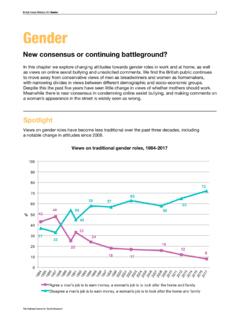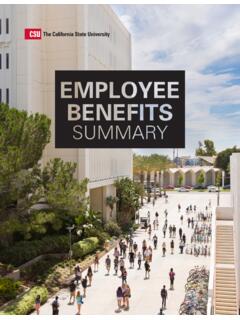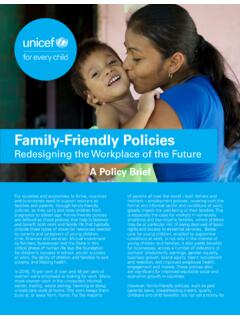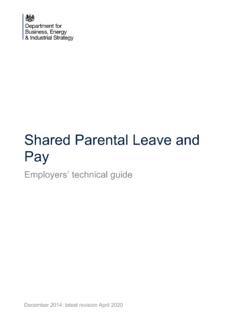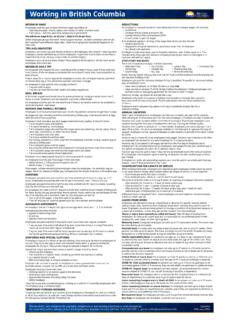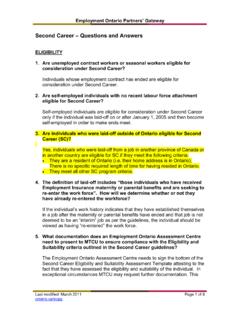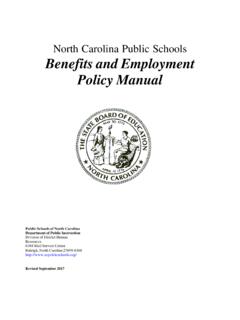Transcription of WORKING FROM HOME DURING THE COVID-19 LOCKDOWN: …
1 WORKING FROM HOME DURING THE COVID-19 LOCKDOWN: Changing preferences and the future of workAuthors: Heejung Chung, Hyojin Seo, Sarah Forbes, and Holly Birkett 3 WORKING from home DURING the COVID-19 lockdown: Changing preferences and the future of workCONTENTST able of figures 4 Executive summary 6 1 Introduction 10 2 Patterns of home WORKING before and DURING the COVID-19 lockdown 11 3 Experiences of WORKING from home 13 Positive experiences of WORKING from home DURING the COVID-19 lockdown Negative experiences of WORKING from home DURING COVID-19 lockdown Mothers lack of capacity to work 4 Work life balance 18 Division of housework and care Work-family conflict Sharing parental leave and the impact on shared caring in lockdown Well-being outcomes 5 Work culture before and DURING lockdown 23 6 Future preferences/attitudes 26 7 Conclusion 31 8 Policy Recommendations 32 Recommendations for organisations/managers Policy recommendations for policy makers Methodology/about the project 34 References 35 Acknowledgements 36 Short introduction of the team 364 TABLE OF FIGURES WORKING from home DURING the
2 COVID-19 lockdown: Changing preferences and the future of workFigure 1. Proportion of workers in the survey having worked from home before and DURING COVID-19 lockdown (%) 11 Figure 2. The proportion of work colleagues WORKING from home before and DURING the COVID-19 lockdown (%) 11 Figure 3. Proportion of employees WORKING flexitime before and DURING the COVID-19 lockdown (%) 12 Figure 4. Average number of hours worked by employees DURING evenings/night before and DURING lockdown by parental /gender status (number of hours) 12 Figure 5. Top positive experiences of WORKING from home DURING the COVID-19 lockdown by gender/ parental status (as a % of those who worked from home DURING the COVID-19 lockdown) 13 Figure 6. Proportion of employees reporting a positive outcome of the COVID-19 lockdown as being more productive, by gender and parent status (%) 14 Figure 7. Top negative experiences of WORKING from home DURING lockdown for mothers and fathers and women and men without children (as a % of all those who have worked from home DURING the COVID-19 lockdown) 15 Figure 8.
3 Experiences of WORKING from home by gender/ parental status. (as a % of all those who have worked from home DURING the COVID-19 lockdown) 16 Figure 9. Changes in the contractual and actual WORKING hours by gender/ parental status (changes in hours) 17 Figure 10. Changes in the contracted and actual hours of mothers and fathers with primary school aged children before and DURING COVID-19 lockdown (hours) 17 Figure 11. Proportion of heterosexual couples where women carry out most if not all of the housework/care before and after coronavirus lockdown (%) (childcare data is only for those with children under 18 years of age) 18 Figure 12. Proportion of respondents who say they are spending more, or much more time on housework/childcare activities by gender (%) 19 Figure 13. Perception on work family conflict of parents WORKING from home DURING the COVID-19 lockdown (%) 20 5 Figure 14. Women reporting male partner sharing routine childcare equally or doing more of the childcare by whether they both took more than two weeks leave after birth or adoption (%) 21 Figure 15.
4 Proportion of employees feeling the following feelings more than half the time in the past month DURING lockdown (including most/all the time) (%) 22 Figure 16. Proportion of employees reporting the following feelings more than half the time in the past month ( DURING lockdown) (including most/all the time) by gender/ parent status (%) 22 Figure 17. The perception of management support and impact of WORKING from before and DURING the COVID-19 lockdown (%) 23 Figure 18. Perceived management support for WORKING from home before and DURING the COVID-19 lockdown by gender/ parental status (%) 24 Figure 19. Managerial support for those WORKING from home before and those WORKING from home DURING the COVID-19 lockdown (%) 24 Figure 20. The proportion amongst those WORKING from home agreeing or strongly agreeing to statements involving tools (%) 25 Figure 21. The proportion of employees across different gender/ parental statuses agreeing to the statement WORKING from home leads to negative career outcomes before and DURING the COVID-19 lockdown (%) 25 Figure 22.
5 Top reasons why employees would like to/think they will work from home after the COVID-19 lockdown has ended by gender/ parental status (% of workers who chose this option) 26 Figure 23. Proportion of mothers and fathers who (strongly) agree that they would like to work flexibly or reduce their WORKING hours to spend more time with family in the future (%) 27 Figure 24. Proportion of employees who would like their partners to work flexibly in the future by gender/ parental status (%) 28 Figure 25. Profile of respondents in the data 34 WORKING from home DURING the COVID-19 lockdown: Changing preferences and the future of work6 EXECUTIVE SUMMARY Between the 22nd of May and the 15th of June, researchers from the WORKING from Home DURING COVID-19 lockdown Project, run by the University of Kent and the University of Birmingham, conducted a survey of UK employees with the aim of understanding how the COVID-19 pandemic, the lockdown and widespread WORKING from home has influenced a range of work-life issues.
6 This research produced the following key findings: There has been a radical change in work practices and culture There has been a steep rise in the number of employees WORKING flexibly DURING lockdown with almost all (86%) employees in our survey having worked from home and 70% of employees WORKING flexitime (flexible starting and ending times of work). We also see a decline in stigma around flexible WORKING DURING this period. Line managers have generally been supportive of home- WORKING 90% of respondents who worked from home felt that managers were supportive of this arrangement. Respondents suggest that managers have become more aware and more understanding of their responsibilities outside the workplace since the COVID-19 lockdown and mass homeworking. With responding positively to the statement My manager really cares about the effect that work demands have on my personal and family life . Respondents also suggest managers/organisations have become much better at providing the support and tools needed for effective homeworking since lockdown.
7 This experience of home- WORKING has influenced preferences for flexible WORKING in the future Employees identified positive aspects of WORKING from home DURING the COVID-19 lockdown, including the ability to: take care of children, do housework and spend more time with their partners. 36% of respondents said they were able to get more work done in a shorter amount of time at home DURING lockdown, and 43% were able to focus on work priorities while WORKING from home. 2 3 of non-parents and 52% of all parents said it is (very) likely that they will work from home after the COVID-19 lockdown has ended. Employees identified the following as key reasons they wanted to work from home more in the future: to reduce commuting times, to spend more time with family, to increase in productivity and to improve well-being. 76% of all mothers and 73% of fathers surveyed agreed or strongly agreed that they would like to work flexibly to spend more time with children.
8 A further 64% of fathers and 59% of mothers also said that they would like to reduce their WORKING hours to spend more time with family. 3 4 of our respondents with partners would also like their partners to work flexibly in the future. There were also some negative experiences of home WORKING DURING the lockdown 2 3 of employees identified the blurred boundaries between work/home as a key negative aspect of WORKING from home. Many noted lack of equipment and space to work when WORKING from home. Missing interactions with colleagues was noted as a key negative aspect of WORKING from home, especially among women without children. This group was also much more likely to feel nervous and stressed DURING the lockdown than their male counterparts. Parents, especially mothers, struggled to find the space and time to carry out work DURING lockdown Mothers identified increased housework and childcare as one key negative experience of WORKING from home.
9 The majority of women responded that they are doing more (or much more) housework and care for example more than say they do more children s education. Only 50% of mothers and 58% of fathers could secure a stable block of time to work DURING the lockdown, and only 15% of mothers had clear boundaries between work/family, underlining mothers struggle to work DURING school/childcare facilities closures. WORKING from home DURING the COVID-19 lockdown: Changing preferences and the future of work7 We have seen a significant increase in self-reported productivity but a decrease in the actual WORKING hours of mothers, especially those with primary school aged children (22% decrease), DURING the lockdown. Mothers are also WORKING considerably more in the evenings than before the COVID-19 lockdown. Fathers involvement in childcare and unpaid work in home has also increased DURING lockdown Fathers increased their contribution to childcare and housework DURING the COVID-19 lockdown, this was higher where fathers had taken more than two weeks paternity leave .
10 We see an increase in number of couples who indicate that they have shared housework/care activities DURING lockdown. This highlights the link between homeworking and sharing of unpaid work in the home and also suggests that parents might have established new patterns of gendered care and unpaid work in the home DURING lockdown which could potentially influence behaviours and wider cultural norms around care and housework in the future. Worrying trends around mental health and well-being for parents, especially for mothers Parents, especially mothers, have felt very high levels of work-family conflict DURING lockdown: half of the mothers who were WORKING from home agreed that their job prevents time for family (49%) and that family prevented time for their job (50%). There are signs that the increased workload and conflict between work and family has negatively impacted parents mental well-being, especially for mothers.
